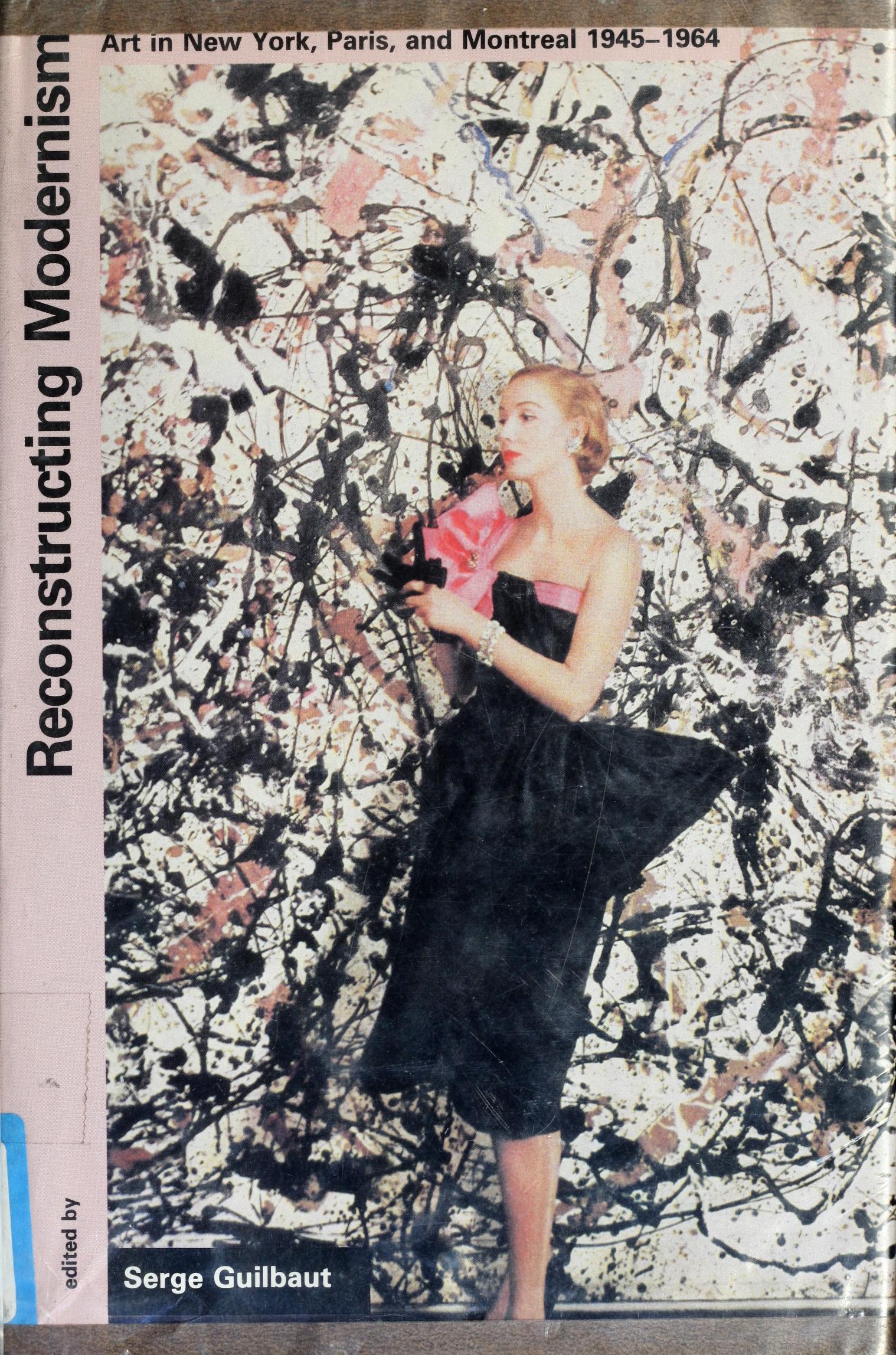Serge Guilbaut (ed.): Reconstructing Modernism: Art in New York, Paris, and Montreal 1945-1964 (1990)
Filed under book | Tags: · 1940s, 1950s, 1960s, abstract art, abstract expressionism, abstraction, art history, modernism, neo-dada, painting

“These essays reopen the case of postwar abstraction. They constitute a dialogue among historians, critics, painters, and art historians that allows not only new readings of specific art works but also a new understanding of the reception of art in the postwar Western world.
Reconstructing Modernism takes up the complex relationship between art and politics in the postwar years, debating the reasons for the simultaneous development in Paris, Montreal, and New York of a type of ‘hot’ expressionist painting–variously called abstract expressionism, abstraction lyrique, automatisme–and its replacement by neodada and neocold abstraction in the early 1960s. Well-known works by Pollock, Warhol, Soulages, Fautrier, Rauschenberg, and Gabo are reassessed, and their meaning is reappraised according to the larger international artistic and political discourse.
The contributions cover a wide range of issues. Timothy J. Clark, Thierry de Duve, Constance Naubert-Riser, and Thomas Crow focus on specific works of major artists of the period. Laurie J. Monahan, Serge Guilbaut, and Benjamin H. D. Buchloh look at art production in relation to particular aspects of the Cold War. Jean Baudrillard and François-Marc Gagnon discuss the effects of the international situation on the arts in general. John Franklin Koenig describes the experience of an American artist working in Paris after the war. John O’Brian relates the impact and the reception of Matisse’s work in New York, and Lary May discusses the transformation of Hollywood during the McCarthy era.”
Publisher MIT Press, 1990
ISBN 0262570920, 9780262570923
418 pages
PDF (146 MB)
Comment (0)Hannah Higgins: Fluxus Experience (2002)
Filed under book | Tags: · art, art criticism, art history, education, experimental film, fluxus, happening, intermedia, intermedia art, neo-dada, performance, performance art, pop art

“In this work, Hannah Higgins explores the influential art movement Fluxus. Daring, disparate, contentious—Fluxus artists worked with minimal and prosaic materials now familiar in post-World War II art. Higgins describes the experience of Fluxus for viewers, even experiences resembling sensory assaults, as affirming transactions between self and world.
Fluxus began in the 1950s with artists from around the world who favored no single style or medium but displayed an inclination to experiment. Two formats are unique to Fluxus: a type of performance art called the Event, and the Fluxkit multiple, a collection of everyday objects or inexpensive printed cards collected in a box that viewers explore privately. Higgins examines these two setups to bring to life the Fluxus experience, how it works, and how and why it’s important. She does so by moving out from the art itself in what she describes as a series of concentric circles: to the artists who create Fluxus, to the creative movements related to Fluxus (and critics’ and curators’ perceptions and reception of them), to the lessons of Fluxus art for pedagogy in general.
Although it was commonly associated with political and cultural activism in the 1960s, Fluxus struggled against being pigeonholed in these too-prescriptive and narrow terms. Higgins, the daughter of the Fluxus artists Alison Knowles and Dick Higgins, makes the most of her personal connection to the movement by sharing her firsthand experience, bringing an astounding immediacy to her writing and a palpable commitment to shedding light on what Fluxus is and why it matters.”
Publisher University of California Press, 2002
ISBN 0520228677, 9780520228672
259 pages
Reviews: Ken Friedman (Design Research, 2003), Jennie Klein (PAJ: A Journal of Performance and Art, 2004), Roy R. Behrens (Leonardo, 2004), Branislav Jakovljevic (TDR: The Drama Review, 2004), Ágnes Ivacs (Artpool, n.d.).
PDF (updated on 2012-7-18)
Comment (0)
